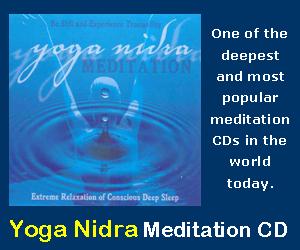|
|
Six
Schools of Indian Philosophy
by
Swami Jnaneshvara Bharati
SwamiJ.com
Yoga is a classical
school of Indian philosophy: To understand the true nature of
Yoga as a path of spiritual realization, it is
necessary to have some small understanding of the six classical schools
or systems of Indian philosophy, of which Yoga is one. By understanding Yoga in that
context, it is easier to more
fully delve into Yoga as the enlightenment practice that it actually is,
rather than the mere physical fitness program it has come to be known
as. The sincere seeker can then discriminate between authentic teachings
and modern adaptations. (See Modern Yoga
Versus Traditional Yoga)
Yoga contains, or is
built on other philosophies: It is important to note
that the Yoga system contains, or is built on four of the other systems or
schools of Indian philosophy (Nyaya,
Vaisheshika, Mimasa, and Sankhya). In other words, it is not necessary
to go into great depth into those as separate studies and practices. They are
adequately incorporated into the Yoga system, from the standpoint of
doing the practices. In addition, the Vedanta system is a practical
companion to the Yoga system (See
Yoga, Vedanta, and Tantra). It is also important to note that
while there is not universal agreement, many consider the teachings of
Buddha to be a seventh system or school of Indian philosophy, rather than a
separate system, in that his methods come from the same root. Not
surprisingly, it is mostly those who self identify as Buddhists who
think of Buddha's teachings as a totally separate system and not a
seventh school of Indian philosophy.
Dates of these systems:
The exact dates of
formalizing the six systems are not known, as the studies were
originally purely oral, since writing had not yet been created. However,
estimates generally range from about 2,000-3,000 or more years ago. Some
say the roots of these are as much as 5,000-10,000 years ago, or more. The
absence of clear dates is also explained as coming from the fact that
the practitioners were so focused on the timeless quality of higher
truths that they simply didn't care to record dates.
| Yoga |
Practical
methods for direct experience: Yoga systematically deals with all of the
levels of one's being, striving to experience the eternal center
of consciousness. Yoga is best described in the Yoga
Sutras and involves systematic witnessing of your inner
states, so as to experientially go beyond all of them to the
center of consciousness. Yoga
is often called Sankhya-Yoga, as Yoga contains the practical
methods to realize in direct experience the truths of
Sankhya philosophy (below).
(See book
reviews on the Yoga Sutras and the many books
by Swami Rama)
|
| Sankhya |
Framework
of manifestation: Sankhya philosophy offers a framework for
all the levels of manifestation, from the subtlest to the
grossest. Sankhya comes from samyag akhyate, which
literally means that which explains the whole. Sankhya deals
with prakriti (matter),
purusha (consciousness), buddhi or mahat
(intelligence), ahamkara (I-am-ness), three gunas (elements of
stability, activity, and lightness), mind (manas), cognitive and
active senses (indriyas), and the five subtle and gross elements
(earth, water, fire, air, and space). In light of its
breadth, it contains all of the domains of Vaisheshika, Nyaya,
and Mimasa, which are described below.
|
| Vedanta |
Contemplative
self-inquiry: Vedanta
philosophy and practice
provides contemplative methods of self-inquiry leading to
the realization of one's true nature, that which is not subject
to death, decay, or decomposition. A major key of these
practices is contemplation on the Mahavakyas.
The teachings of Vedanta are best captured in the books of the
Upanishads. The text, Vivekachudamini (Crest Jewel of
Discrimination) by Adi Shankaracharya is an excellent source,
and is available in English translation. (See also Vedantic
Meditation)
(See book
reviews on Vedanta, Vivekachudamini,
and related books
by Swami Rama)
|
| Vaisheshika |
Physical
sciences: The
Vaisheshika system was developed by Prashastapada and emphasizes the physical sciences such
as chemistry. It includes exploring the elements of earth,
water, fire, air and space, as well as time, mind and soul.
|
| Nyaya |
Reasoning: The
Nyaya system was founded by the ancient sage Gautama, and deals with
logic, the process of reasoning. Doubt is considered a
prerequisite for philosophical inquiry. Other systems of Indian
philosophy draw on this process.
|
| Mimasa |
Freedom
through action: The
Mimasa system was founded by Jaimini and pursues freedom through
action. It has a detailed philosophy related to ritual, worship
and ethical conduct, which developed into the philosophy of
karma.
|
Home
Top

-------
This site is devoted to
presenting the ancient Self-Realization path of
the Tradition of the Himalayan masters
in simple, understandable and beneficial ways, while not compromising
quality or depth. The goal of our sadhana or practices is the highest
Joy that comes from the Realization in direct experience of the
center of consciousness, the Self, the Atman or Purusha, which is
one and the same with the Absolute Reality.
This Self-Realization comes through Yoga meditation of the Yoga
Sutras, the contemplative insight of Advaita Vedanta, and the
intense devotion of Samaya Sri Vidya Tantra, the three of which
complement one another like fingers on a hand.
We employ the classical approaches of Raja, Jnana, Karma, and Bhakti
Yoga, as well as Hatha, Kriya, Kundalini, Laya, Mantra, Nada, Siddha,
and Tantra Yoga. Meditation, contemplation, mantra and prayer
finally converge into a unified force directed towards the final
stage, piercing the pearl of wisdom called bindu, leading to the
Absolute.
|
|
